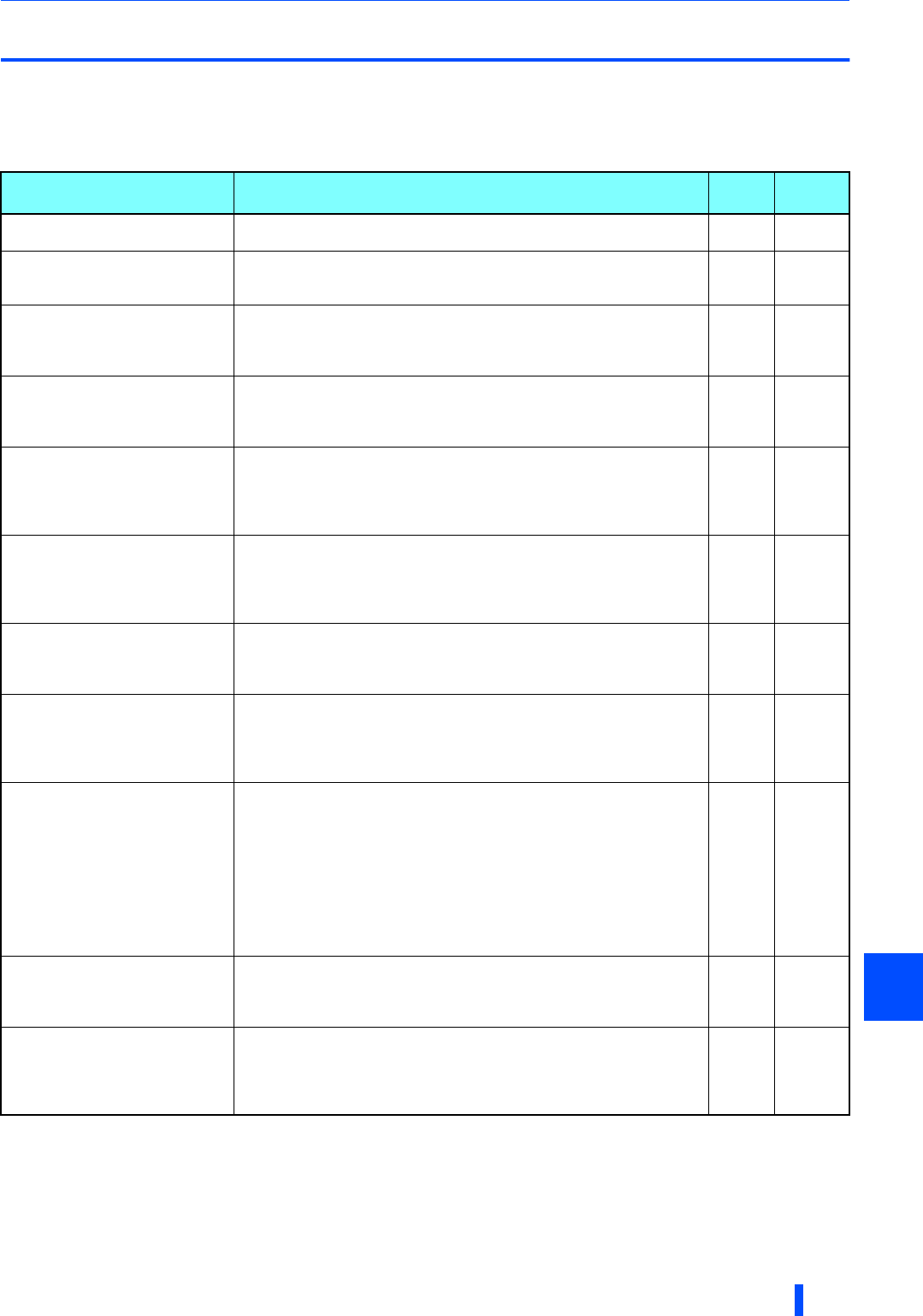
Checklist before starting operation
PRECAUTIONS FOR USE OF THE INVERTER
73
3
3.6 Checklist before starting operation
The FR-A800 series inverter and FR-CC2 converter unit are highly reliable products, but incorrect peripheral circuit making or
operation/handling method may shorten the product life or damage the products.
Before starting operation, always recheck the following points.
Checkpoint Countermeasure
Refer
to page
Check
by user
Crimping terminals are insulated.
Use crimping terminals with insulation sleeves to wire the power supply and
the motor.
-
The wiring between the power
supply (R/L1, S/L2, T/L3) and the
motor (U, V, W) is correct.
Application of power to the output terminals (U, V, W) of the inverter will
damage the inverter. Never perform such wiring.
29
No wire offcuts are left from the time
of wiring.
Wire offcuts can cause an alarm, failure or malfunction. Always keep the
inverter and the converter unit clean.
When drilling mounting holes in an enclosure etc., take caution not to allow
chips and other foreign matter to enter the inverter and the converter unit.
-
The main circuit cable gauge is
correctly selected.
Use an appropriate cable gauge to suppress the voltage drop to 2% or less.
If the wiring distance is long between the inverter and motor, a voltage drop
in the main circuit will cause the motor torque to decrease especially during
the output of a low frequency.
30
The total wiring length within the
specified length.
Keep the total wiring length is within the specified length.
In long distance wiring, charging currents due to stray capacitance in the
wiring may degrade the fast-response current limit operation or cause the
equipment on the inverter's output side to malfunction. Pay attention to the
total wiring length.
30
Countermeasures are taken against
EMI.
The input/output (main circuit) of the inverter and the converter unit includes
high frequency components, which may interfere with the communication
devices (such as AM radios) used near the inverter and the converter unit. In
such case, activate the EMC filter (turn ON the EMC filter ON/OFF
connector) to minimize interference.
66
On the inverter's output side, none
of the power factor correction
capacitor, surge suppressor, or
radio noise filter is installed.
Doing so will cause the inverter to trip or the capacitor and surge suppressor
to be damaged. If any of the above devices is connected, immediately
remove it.
-
When performing an inspection or
rewiring on the product that has
been energized, the operator has
waited long enough after shutting off
the power supply.
For a short time after the power-OFF, a high voltage remains in the
smoothing capacitor, and it is dangerous.
Before performing an inspection or rewiring, wait 10 minutes or longer after
the power supply turns OFF, then confirm that the voltage across the main
circuit terminals P/+ and N/- of the inverter is low enough using a tester, etc.
-
The inverter's output side has no
short circuit or ground fault
occurring.
•A short circuit or earth (ground) fault on the inverter's output side may
damage the inverter module.
•Fully check the insulation resistance of the circuit prior to inverter operation
since repeated short circuits caused by peripheral circuit inadequacy or an
earth (ground) fault caused by wiring inadequacy or reduced motor
insulation resistance may damage the inverter module.
•Fully check the to-earth (ground) insulation and phase-to-phase insulation
of the inverter's output side before power-ON. Especially for an old motor or
use in hostile atmosphere, securely check the motor insulation resistance,
etc.
-
The circuit is not configured to use
the converter unit's input-side
magnetic contactor to start/stop the
inverter frequently.
Since repeated inrush currents at power ON will shorten the life of the
inverter and the converter unit, frequent starts and stops of the magnetic
contactor must be avoided. Turn ON/OFF the inverter's start signals (STF,
STR) to run/stop the inverter.
71
The voltage applied to the I/O signal
circuits of the inverter and the
converter unit is within the
specifications.
Application of a voltage higher than the permissible voltage to the I/O signal
circuits of the inverter and the converter unit or opposite polarity may
damage the I/O devices. Especially check the wiring to prevent the speed
setting potentiometer from being connected incorrectly to short circuit the
terminals 10E and 5.
33


















